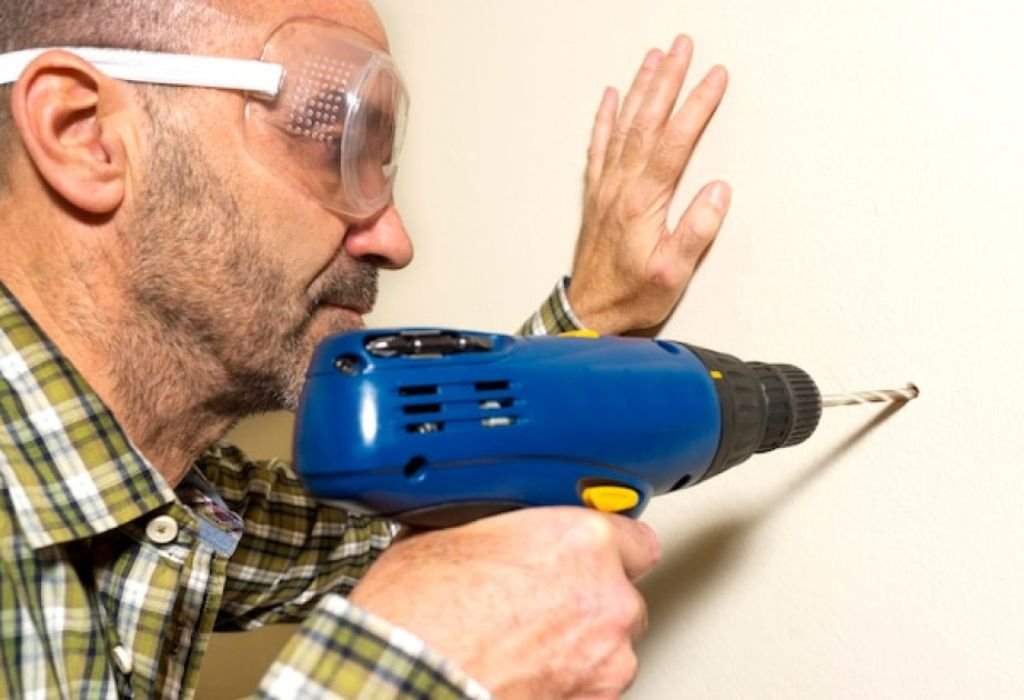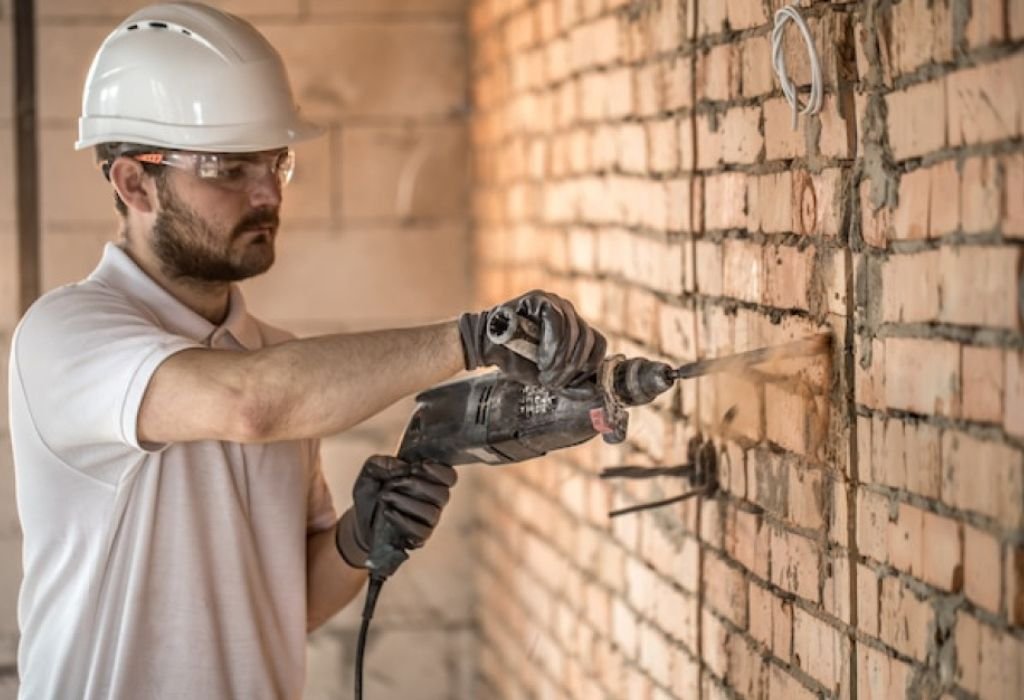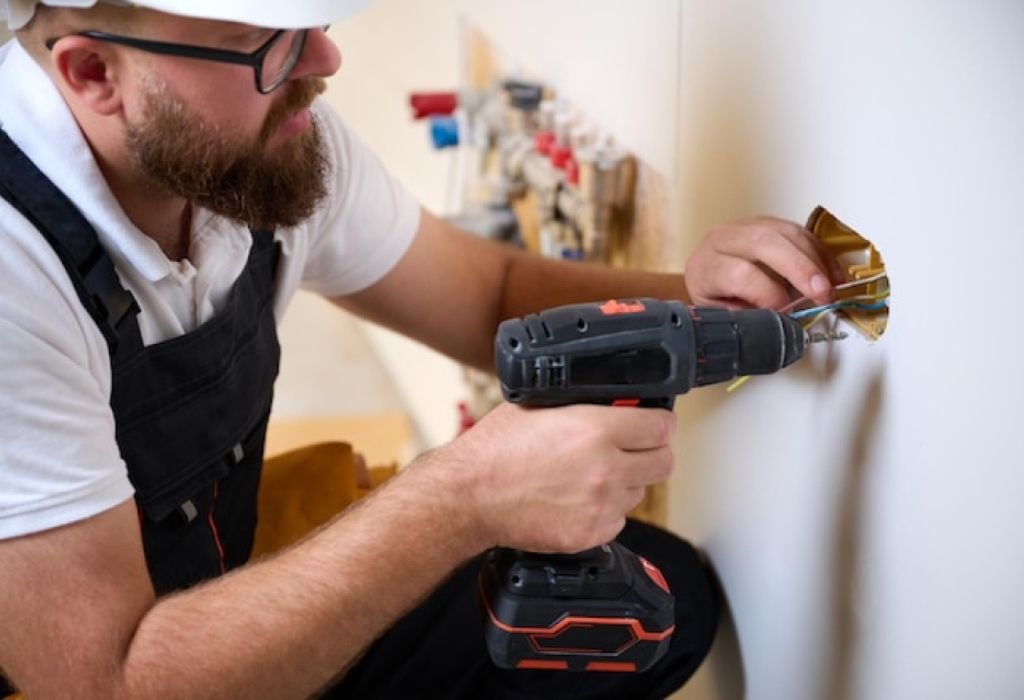A weekend project often begins with confidence until the first hole meets a solid brick wall. The tool in hand may be an impact driver, but the material resists with every push.
This common frustration raises a simple yet critical question: can you drill masonry with an impact driver effectively? Many DIY enthusiasts and professionals face this dilemma when deciding whether to press forward or switch to a more suitable drill.
The confusion is understandable. Impact drivers excel at driving screws into wood and metal with speed and power, but masonry demands a different type of force. Without the right approach, bricks can chip, bits can overheat, and anchors may fail.
The importance of choosing correctly goes beyond convenience. Drilling into masonry without proper technique risks damaging both the wall and the tool. It can also compromise the strength of anchors, reducing safety in mounted shelves, fixtures, or outdoor equipment.
Statistics emphasize the need for caution. Nearly half of serious eye injuries occur during home improvement tasks, including drilling and cutting (CDC). OSHA also highlights that exposure to respirable crystalline silica dust should not exceed 50 μg/m³ over an eight-hour day (OSHA).
Understanding the capabilities and limits of an impact driver provides clarity. With the right masonry bit, light tasks may be possible, but larger jobs demand a hammer drill or rotary hammer.
This guide explores those differences in detail, helping readers avoid costly mistakes and achieve safe, reliable results. The answer lies not only in the tool itself but in the method, materials, and safety measures that go with it.
Quick Answer — Can You Drill Masonry with an Impact Driver?

Yes, you can drill masonry with an impact driver, but only for light-duty tasks. With the right carbide-tipped masonry bit, shallow holes in softer brick or block are possible.
Impact drivers are not designed for sustained masonry drilling. They lack forward hammering action, making progress slow, uneven, and often damaging to bits.
For small projects such as hanging lightweight fixtures, the method may work if patience is applied. However, deeper or larger holes demand a hammer drill or rotary hammer.
The key is understanding limitations. Impact drivers may succeed in some cases, but relying on them for masonry projects leads to frustration and poor results.
Can you drill masonry with an impact driver?
Yes, but only for shallow holes in softer brick or block.
What tool works better for masonry?
A hammer drill or rotary hammer is designed for the job.
Do you need special bits?
Yes, only carbide-tipped masonry bits should be used.
What depth is realistic with an impact driver?
Shallow holes matched to small anchors or plugs.
Is it efficient?
No, drilling is slower and rougher than with a hammer drill.
Impact Driver vs. Hammer Drill vs. Rotary Hammer — What’s Different?
An impact driver creates rotational impacts, making it excellent for screws but weak against masonry. It delivers torque, not forward hammering force.
A hammer drill combines rotation with in-line percussion, chipping material as the bit spins. This makes it much more effective in brick or block.
A rotary hammer uses a piston-driven system that generates strong blows. It pairs with SDS bits for rapid drilling in concrete and heavy masonry.
While impact drivers may scratch the surface, hammer drills and rotary hammers consistently produce cleaner and faster holes. Tool design is the difference.
Why does a hammer drill win in masonry?
It combines hammering and spinning for faster cutting.
When step up to a rotary hammer?
For deep or large holes in hard brick or concrete.
Can adapters make an impact driver equal?
No, bits fit but hammer action is missing.
What about a regular drill?
It can work slowly, but lacks percussion.
Does torque replace hammering?
No, hammering action is the true advantage in masonry.
When Using an Impact Driver on Masonry Makes Sense
There are times when drilling masonry with an impact driver is acceptable. One-off jobs like mounting light fixtures or garden brackets fall into this category.
Softer or older bricks allow easier penetration. Here, an impact driver with the right masonry bit can manage a few shallow holes.
Using an impact driver may also be justified when a hammer drill is unavailable. Renting tools for one small project is not always practical.
Still, this method should be seen as a compromise. For repeat tasks, a hammer drill or rotary hammer is the right investment.
Realistic hole sizes?
Small diameters for lightweight anchors.
Typical depths?
Shallow holes for plugs or screws.
Best materials?
Soft brick or block, not concrete or stone.
What if the hole is rough?
Clean with a brush or use epoxy anchors.
How long will it take?
Much longer than with a hammer drill.
Tools, Bits, and Accessories You’ll Need
Success depends on having the right setup. A carbide-tipped masonry bit with a hex shank is the most critical component.
Other essentials include anchors, plugs, safety glasses, dust masks, and a vacuum for cleanup. A depth stop or tape flag prevents drilling too deep.
Accessories make the difference between a failed attempt and a functional hole. Skipping protective gear risks both tool damage and injury.
Choosing high-quality bits improves efficiency. Cheap bits dull quickly, wasting time and money.
Best bit type?
Carbide-tipped masonry bits.
Hex or round shank?
Hex for impact drivers, round for drills.
Do I need a depth stop?
Yes, it ensures accurate depth.
Is vacuuming necessary?
Yes, it clears dust for better grip.
Do anchors matter?
Yes, they must match the drilled hole.
Step-by-Step — How to Drill Masonry with an Impact Driver

Mark the spot with pencil or marker. Use painter’s tape or a punch to prevent the bit from skating.
Set the driver at low RPM to start a pilot hole. Keep pressure steady and the tool perpendicular.
Drill in short bursts, clearing dust frequently with a brush or vacuum. Pausing prevents overheating and glazing.
Once the hole is complete, test the anchor and clean again. A clean hole ensures maximum holding power.
Best speed setting?
Low RPM for control and safety.
How to reduce heat?
Work in short bursts with pauses.
Why does the bit wander?
Hard surfaces cause skating without a punch.
What if the hole is too small?
Ream lightly with the same bit.
Should you blow dust out?
Vacuum is safer and more effective.
Bit Selection, Hole Size, and RPM Tuning
Correct bit size is essential. Undersized holes crack anchors, while oversized holes cause plugs to spin.
Slow RPM prevents glazing and extends bit life. Rushing only overheats the bit and damages masonry.
Multi-cutter bits handle harder masonry better. They cut faster and produce cleaner holes.
Stability matters. Keep the driver perpendicular and avoid wobbling to prevent oval-shaped holes.
Carbide vs HSS?
Carbide is required for masonry.
Are multi-cutter tips better?
Yes, for harder brick.
Do impact settings help?
No, hammer drills are still superior.
Best way to keep holes straight?
Use a punch mark and steady grip.
How to mark depth?
Wrap tape around the bit as a guide.
Anchors, Wall Plugs, and Load Capacity
Anchors must be chosen carefully. Nylon plugs and masonry screws are most common for small impact-driver-drilled holes.
Depth and distance from edges determine strength. Shallow holes or close-to-edge drilling cause weak anchors and brick spalling.
Mortar is easier to drill but weaker. Brick is harder but provides stronger anchor strength.
Using the wrong anchor size leads to spin and loose fixtures. Always follow manufacturer recommendations.
Which anchors are best?
Nylon plugs and masonry screws.
Do pilot sizes matter?
Yes, match anchor specs.
How close to the edge?
Keep several centimeters away.
Brick or mortar?
Brick is stronger for loads.
What if anchor spins?
Use epoxy or a larger anchor.
Safety First — Dust, Silica, and PPE
Masonry drilling creates dust and chips that can cause injury. Protective gear is essential for safety.
Wear ANSI-rated glasses, hearing protection, and an N95 or P100 respirator for silica dust. Gloves should be snug to avoid snagging.
OSHA warns that silica dust can scar lungs, limiting exposure to 50 μg/m³ over an eight-hour shift (OSHA).
The CDC notes that home DIY tasks cause a large portion of eye injuries (CDC). Safety should never be overlooked.
Do glasses matter for one hole?
Yes, injuries happen instantly.
Is wet drilling safe?
Yes, it reduces dust and heat.
Which respirator works?
N95 minimum, P100 preferred.
Vacuum while drilling?
Yes, for cleaner holes.
Gloves or bare hands?
Snug gloves protect without risk.
Troubleshooting — Common Problems and Fixes
Impact drivers often overheat bits when used on masonry. Short bursts and cooling pauses prevent this.
Wandering starts are another issue. A punch mark or tape helps guide the bit.
Oversized holes lead to anchors that spin. Correcting this requires epoxy or larger anchors.
Surface chipping can ruin appearance. Slow starts and tape prevent ragged edges.
Why won’t the bit cut?
It is dull or overheated.
Why are holes uneven?
Too much wobbling or pressure.
Why is brick face chipping?
Started too fast without tape.
Why does anchor spin?
Hole drilled too wide.
Why does battery drain quickly?
Masonry puts heavy load on drivers.
When to Stop and Switch Tools

Impact drivers cannot handle every masonry job. Large or deep holes require proper tools.
If drilling is slow, ragged, or stalls, it is time to stop. Switching to a hammer drill saves time and effort.
Renting is a cost-effective option. For one-time projects, tool rental avoids damage to your driver and bits.
Heavy-duty jobs need rotary hammers. SDS bits and piston-driven force make drilling effortless.
When to switch tools?
If progress stalls or bit overheats.
Hammer drill or rotary hammer?
Hammer drill for brick, rotary for concrete.
Is renting worth it?
Yes, cheaper than ruining tools.
Can a regular drill work?
Yes, but only for light masonry.
Do impact settings help?
No, they don’t replace hammer action.
Time, Cost, and Outcome Comparison
Impact drivers are slow and hard on bits in masonry. Hammer drills are faster and cleaner, while rotary hammers dominate heavy concrete.
Time saved often justifies tool cost. Rental fees are lower than wasted hours and damaged bits.
Brushless impact drivers help with control but cannot match hammer action. The right tool always ensures better results.
Cleaner holes improve anchor performance and safety. This outcome matters more than convenience.
Is a hammer drill worth it for 4 holes?
Yes, renting saves effort.
Do cheap bits last?
No, they wear out fast.
Do brushless drivers help?
Only with runtime, not hammer action.
Does dust extraction matter?
Yes, it improves anchor strength.
Is a rotary hammer overkill?
Not if drilling large or hard masonry.
Conclusion
So, can you drill masonry with an impact driver? Yes, but only for shallow and light-duty holes using the right carbide-tipped masonry bit.
For serious masonry work, a hammer drill or rotary hammer is the proper choice. These tools protect your wall, preserve your bits, and ensure safe, strong anchors.
The key takeaway is simple. An impact driver can work in a pinch, but investing in or renting the right drill makes every masonry job faster, cleaner, and safer.

I’m John F. Nicholas, the founder, lead writer, and drill enthusiast behind 101drill.com. With years of hands-on experience in power tools and DIY projects, I created this platform to share practical knowledge, expert tips, and real-world insights to help others master the art of drilling.
